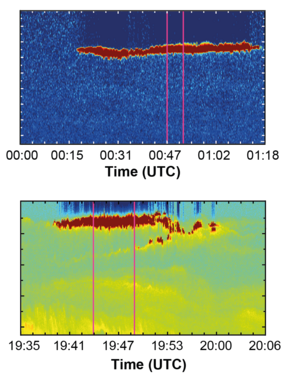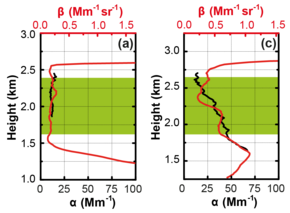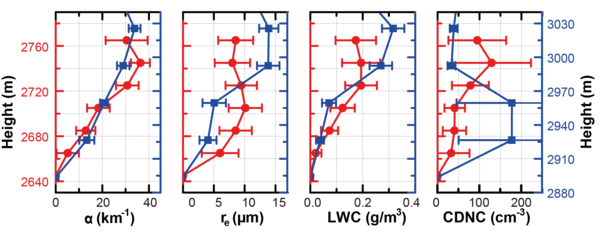The dual-FOV Raman lidar technique, which is explained in here, allows profound investigation of aerosol-cloud interactions. Profiles of cloud microphysical properties can be obtained with this technique. In combination with the conventional data analysis methods for multiwavelength Raman lidar measurements, which give detailed information about aerosol properties below investigated clouds, comprehensive datasets can be obtained. Such comprehensive datasets are necessary for appropriate investigations of aerosol-cloud interactions as these processes are very complex.
The observed cloud response to this difference in aerosol load, shown in Figure 3, is according to the predictions of the Twomey effect. At the lower part of the cloud smaller effective radii are obtained for the cloud with a higher aerosol load below. The corresponding cloud droplet number concentration (CDNC) is increased. These findings can be explained with an increased concentration of cloud condensation nuclei (CCN) due to the higher aerosol load. Updrafts carry these CCN into the cloud which leads to cloud droplet formation. Hence, the CDNC is increased at the cloud base. As the liquid water content is similar, this leads to smaller cloud droplets.



